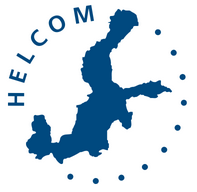The strategic direction for HELCOM internal and external communication has been set and adopted by the HELCOM Annual Meeting last… Read More »
HELCOM devises a fitness programme
The first part of a more modern HELCOM is ready and agreed on, describing a plan for major deliverables by… Read More »
Statement by Executive Secretary on the 2013 HELCOM Activities
Statement by the Executive Secretary of HELCOM, Mrs. Monika Stankiewicz, giving her account on the activities of the Commission in… Read More »
Region’s key current issues reviewed in HELCOM Annual Meeting
The 35th Annual Meeting of closed yesterday evening after reviewing the current and relevant key issues related to regional policy-making… Read More »
Higher political support needed for cleaner Baltic, says Halonen
President Tarja Halonen and HELCOM Executive Secretary Monika Stankiewicz. Photo: Marco ManziJoyful mood accompanied the HELCOM 40th anniversary Jubilee session… Read More »
Main celebrations for 40-year Helsinki Convention start tomorrow
Honorary guests, expert speakers and panelists, and the extended HELCOM family will celebrate tomorrow 5 March the 40th anniversary year… Read More »
Baltic monitoring and assessment experience contributes to EU Conference
A major Brussels conference ‘Healthy Oceans – Productive Ecosystems ()’ opens today bringing together those working with or in relation… Read More »
Baltic progress in marine protected areas discussed with global executive
The renowned efforts of HELCOM on marine protected areas (MPAs) are addressed today in a high level visit of Executive… Read More »
Tackling spills across Europe
HELCOM hosts a pan-European meeting today on pollution incident cooperation, with the view to maintain a thorough exchange of experiences… Read More »
President Halonen opens HELCOM 40th Jubilee
WHOPresident Tarja Halonen;Ville Niinistö, Minister of Environment of Finland;Jacqueline Alder, Head, Freshwater and Marine Ecosystems Branch, Division of Environmental Policy… Read More »
